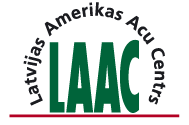CSO Sirius corneal topographic system
CSO Sirius corneal topographic system
CSO Sirius topographic system allows for evaluation of anterior and posterior corneal topography, thicknes of cornea, depth of anterior chamber, iridocorneal angle, pupil diameter, stability of tear film, to find the most suitable contact lenses for corneal parameters.
Combination of Placido disk topography and Scheimflug camera tomography enables CSO Sirius Combines placido disk topography with Sheimpflug tomography of the anterior segment. Sirius provides information on pachymetry, elevation, curvature and dioptric power of both corneal surfaces over a diameter of 12 mm. All biometric measurements are made in 25 different sections of the cornea. Measurement speed reduces the effect of eye movement producing a high quality accurate measurement.
The most common purposes for the use of the equipment are: refractive and cataract surgery, an IOL calculation module is available. Objective examinations provide an accurate measurement of pupil diameter in scotopic, mesopic and photopic light conditions. In combination with the corneal map these data are excellent for refractive surgery planning and dynamic observation.
Glaucoma screening
For glaucoma specialists Sirius enables the measurements of iridocorneal angle and corneal thickness. These two measurements are useful in the diagnosis of glaucoma.
Keratoconous screening
Keratoconus screening provides the clinician with important information about the patient’s cornea. By the data obtained it is possible to avoid such a corneal shape changing complications as ectasia before corneal surgery is undertaken.
Pupillography
Sirius system has built-in pupillography measurement software that allows for pupil measurements in scotopic (0.04 lux), mesopic (4 lux) photopic (50 lux) and under dynamic or changing lighting conditions. It is important to evaluate the center and diameter of the pupil for many clinical procedures to obtain the highest vision quality.
Advanced analysis of tear film
Placido disk technology allows for the advanced evaluation of the tear film, for example, carry out NIBUT (non-invasive tear film break-up time).
Meibography
QWith the help of infrared light it is possible to take the image of Meibomian glands, which can be analyzed by software to evaluate the condition of Meibomian glands.




